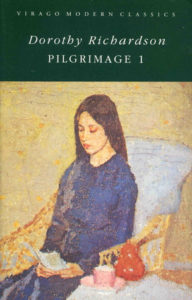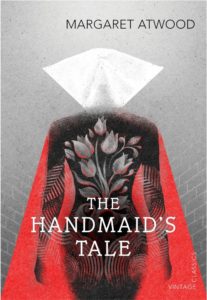It’s only after having completed two novels, The Lodger and The Dragon Lady, that I realize a pattern is emerging. I am drawn to writing about strong women who refused to conform and who struggled to find their place in the world; women who were ground-breakers and pioneers. What follows is a selection of my personal favorite boundary-breaking women in fiction. It could have been much longer—in the end, I limited myself to ten.

Alice in Alice in Wonderland by Lewis Carroll
An adventurous yet level-headed seven-year-old who jumps into a dream world, Alice follows her instincts and the strange characters she meets, standing her ground when she suspects nonsense. If she has one overriding characteristic, it is curiosity. She is willing to follow anyone anywhere, as long as they interest her. Even when she’s frightened, she can master her fear in order to keep exploring or to reach a goal. She becomes more assertive as her journey continues and stands up to a tyrant (the Queen of Hearts) without losing her self-possession—or her head. I love that Alice has an adventure as a girl on her own, works things out for herself, and doesn’t need to be saved by a boy.

Becky Sharpe in Vanity Fair by William Makepiece Thackeray
A poor orphan of low birth, Becky knows what she wants from life—money and a social position—and knows how to use her feminine wiles to get them. Her outstanding attribute is ambition. Men and marriage are an important, but not a dominant, part of her life. This is pretty radical for a female character in the mid-Victorian period and it’s what makes Becky so interesting.
She manages to raise herself to the upper limits of society and wealth, only to see her achievements crumble under the weight of her bad deeds. For me, the sticking point with Becky is her dislike of her son, little Rawdon. She has no maternal feeling. On the other hand, when the chips are down, she’s the only real friend Amelia ever had. Evil schemer or misunderstood woman ahead of her time? You decide.

Miriam Henderson in the Pilgrimage series by Dorothy Richardson
I was intrigued by Miriam because she is fearless, unconventional and utterly original. Her character is based on the author, whom Virginia Woolf considered an innovator of modernism. Miriam can’t settle down and conform to any of the limited roles available to women, but smashes just about every boundary and taboo going. She earns her living as a dental assistant in London, has an affair with H.G. Wells while equally attracted to a beautiful, free-spirited woman in her boarding house, and goes on to write the first stream of consciousness novel in English.

Miss Marple (Miss Marple series) by Agatha Christie
Miss Marple is an elderly spinster with prim clothes and a fondness for knitting. But beneath her grandmotherly appearance there’s a tack-sharp mind at work, constantly observing and evaluating. She knows who she is and is totally unfazed about living up to other people’s expectations of her. Her brilliance lies in her low-key and unexpected wisdom, and her unsentimental understanding of human nature. ‘It’s very dangerous to believe people,’ she says wryly. ‘I haven’t for years.’ She is one of the few lone female figures to rise to the top of literature’s sleuthing ranks, frequently embarrassing the local police by solving mysteries that have them baffled.

Orlando in Orlando by Virginia Woolf
Orlando is a hero who becomes a heroine, who falls in love with men and women, and who rails against the system. Based on Woolf’s love interest, Vita Sackville-West, Orlando shares many of West’s qualities: a deep reverence for history and family tradition, and a poetic, brooding nature.
Orlando is the first English language trans novel and it was way ahead of its time in terms of gender politics. But while the novel is forward-thinking, it is also playful and elegant. And in Orlando’s relationship with the androgynous Shel, Woolf seems to be advocating the importance of human connection over the trappings of gender. Orlando and Shel’s marriage has the appearance of social respectability, but that’s less important than their genuine love for one another.

Caddy Compson in The Sound and the Fury by William Faulkner
Caddy rebels against the patriarchy, the aristocracy, her mother, and the notion of the chaste Southern lady, and in the process, becomes the agent of her own destruction. Wild, passionate and loving, she is unconcerned with appearance, instead searching for the truth and reality of any situation. We see her character only through the eyes of her three brothers and parents. Although we recognize that we will never truly know her, she is one of the warmest and freest spirits in literature. That contradiction really appeals to me.

Harriet Vane in Lord Peter Wimsey and Harriet Vane series by Dorothy L Sayers
Harriet is modeled on Sayers herself: she has achieved a First-class degree from Oxford, and, orphaned at twenty-three, has made her fortune writing detective fiction. I love Harriet’s humor and her enquiring mind. I love the interplay between the mysteries and her love affair with Lord Peter Wimsey, which is stretched out over multiple books. The novels explore the difficult balance between love and work and whether it’s possible for a woman to have it all, which is as relevant today as when Harriet first appeared in 1930. I love that Harriet finds a marriage where her partnership is equal, and she is neither subordinate to Wimsey nor put on a pedestal.

Offred in The Handmaid’s Tale by Margaret Atwood
Offred lives in a dystopian society where women have no autonomy. She has been taken away from her husband and child and forced into a sexual relationship, yet she manages to retain her identity through small acts of disobedience. She steals butter and uses it as face and hand cream. She meets a man’s eyes in public, when she’s not supposed to look at men.
It’s an event, a small defiance of rule, so small as to be undetectable, but such moments are the rewards I hold out for myself, like the candy I hoarded, as a child, at the back of a drawer.
Offred’s unbroken spirit demonstrates the limitations of Gilead’s power over its subjects.

Smilla from Smilla’s Sense of Snow by Peter Hoeg
Smilla is a bundle of contradictions. She lives in low-rent public housing, yet she dresses expensively. She seems emotionally self-sufficient, yet she falls in love and it terrifies her. She is beautiful and petite, yet she is capable of surprising violence against stronger opponents. The daughter of a wealthy Danish physician and an Inuit hunter, she doesn’t fit in anywhere.
Smilla realizes that the suspicious death of Isiah, the Greenlandic boy she looks after, is only the tip of an iceberg of violent crime. Armed with nothing but her intelligence, her courage, and her two special gifts—her almost psychic understanding of snow and ice, and her perfect sense of direction – she gets to the heart of the mystery, putting herself in mortal danger, and keeping her promise to Isiah “not to leave him in the lurch, never, not even now.”

Lisbeth Salander in The Girl with the Dragon Tattoo by Stieg Larsson
Lisbeth is one of the most intriguing and charismatic characters anywhere. An outsider in every sense, she is a twenty-four-year-old anorexic and bisexual loner with multiple piercings and tattoos, a history of mental illness, a photographic memory and a talent for hacking. Her appeal arises from her combination of vulnerability and ruthless competence. Lisbeth can hack any machine, crack any code and, when necessary, administer punitive violence, but she is also a lost and abused child, isolated by the mysterious trauma of her past, and by her official status as a mentally ill person. She intrigues us because she continually subverts our expectations. In Stieg Larsson’s words: “Just when you think you’ve got a handle on [her] thought processes, [she] behaves or thinks in opposition to your expectations. Sometimes these people look like pretty flowers, but when you try to pick them, you discover stinging nettles in your grasp.”

















